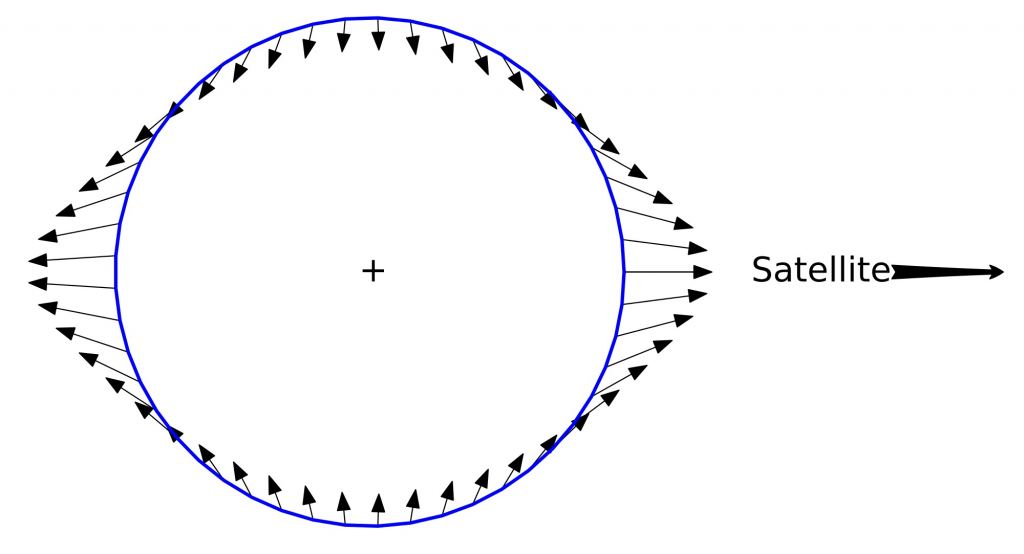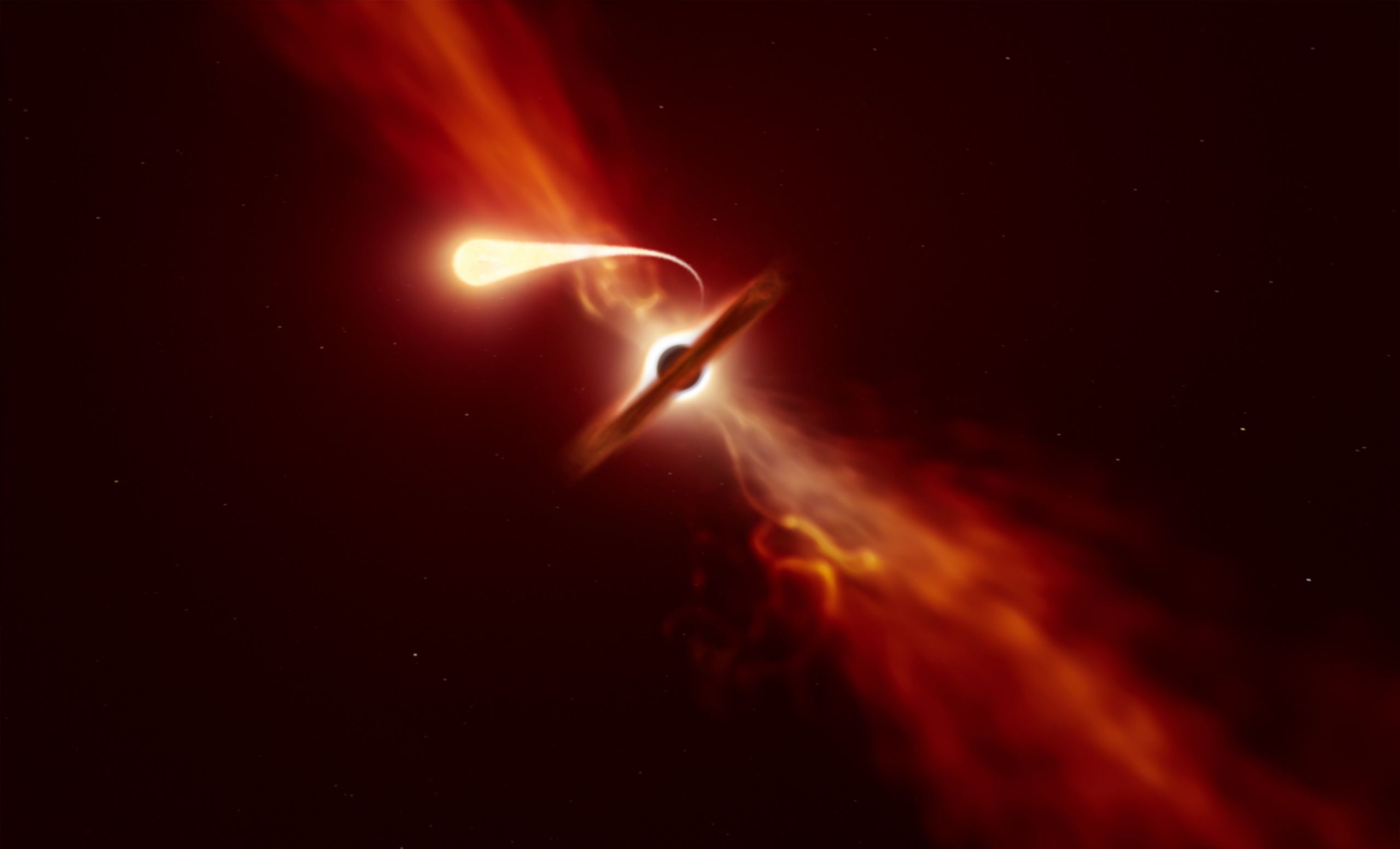Seldom Bucket
Well-Known Member
The gravitational dance between massive bodies, tidal forces occur because the pull of gravity from an object depends upon your distance from it. So, for example, the side of Earth near the Moon is pulled a bit more than the side opposite the Moon. As a result, the Earth stretches and flattens a bit. On Earth, this effect is subtle but strong enough to give the oceans high and low tides. Near a black hole, however, tidal forces can be much stronger, creating an effect known as spaghettification.
A diagram showing the tidal forces on a planetary body. Credit: Wikipedia user Krishnavedala
The strength of a tidal force depends upon the mass of an object and how close you are to it. The larger the mass, and the closer you are, the stronger the tidal force. When an object approaches a black hole, the tidal forces become so strong that it can rip an object apart. Spaghettification is where a black hole tidally disrupts an object, stretching its remains into a long stream. We’ve long suspected that stars are ripped apart when they get too near a black hole, and now astronomers have watched it in action.[^1]

Astronomers Watch a Star Get Spaghettified by a Black Hole
When a black hole consumes a star, it does so by turning it into spaghetti first. Astronomers have seen it happen.
 www.universetoday.com
www.universetoday.com
